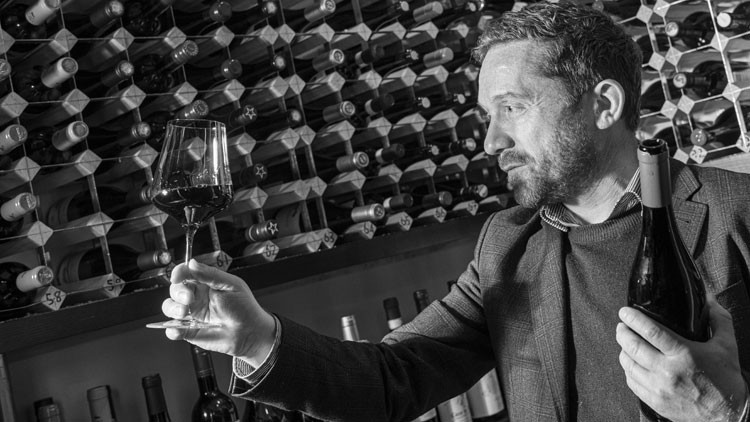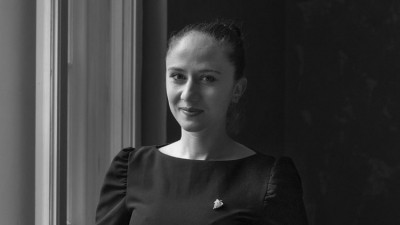Uncorked: James Ratcliffe

Tell us about the moment you first became interested in wine
I was something that crept up on me. I was obsessed with food from a young age and wanted to explore as much as possible. Heading to university and cooking for myself that passion developed and I became interested in wine due to it going hand in hand with food. When my parents moved out to Spain wine became a very important part of the visit either when we dined at home or ate out in restaurants. Other moments that stand out for me include a tasting I attended at a restaurant I was working at and being the only one to nail the lychee flavour in a Gewurztraminer, something I’d picked up from Thai food. I started to realise there was much more to wine than I’d originally thought.
Tell us about your wine list at The Black Bull Inn
The wine list is a very personal list to me, something that takes up a lot of thought, and is as much part of my own journey as the restaurant's wine list. It would be easier to have a fixed list but the passion we have for the wines we offer would not shine through. The ever-changing wines by the glass selection allows both staff and customers to sample something different and build their own palate. That said, I also keep certain customers in mind, and include some ‘comfort classics,’ much like the beef pie on our a la carte menu. The focus certainly tilts towards the Old World rather than the New World, organic, biodynamic, ‘natural’ wines, and with a preference for smaller producers. I think people forget wine production is just another type of farming, and as with all the produce we use in the restaurant those farming processes are important.
Over the course of your career, have you had any wine-related disasters?
Not so much a disaster but misunderstandings. Some of our more natural wines can throw some of our customers. We serve some cloudy, funky, and tart wines and some people still don’t get that it’s a real thing and not a flaw. Firstly, the problem with taste is that the eyes, before tasting, play an important part in our decision-making processes. People see a cloudy wine and instantly presume it’s not right and that impacts their first taste. Staff need to be confident and have the knowledge to reassure the guest that this is how the wine should be, that way they can put the guest at ease. Communication is key here.
Name your top three restaurant wine lists
Trivet, Noble Rot and Sager & Wilde are the obvious, absolute giants in terms of wine lists. However, being a northerner, I think it’s important to highlight those trying to make a difference outside of London. The Moorcock, Where the Light Gets In and Hjem also have stand out wine lists.
Who do you most respect in the wine world?
Woman are leading the way in the wine world at the moment and more importantly they’re taking the pomposity out of wine. Honey Spencer in London, Anna Frost at Hjem and Emily Klomp at Where the Light Gets In are not only creating great wine lists but also changing the way we think about wine. Beyond wine they are also changing the whole way people think about taster pairings too, really thinking outside the box when it comes to food and drink pairings.
What’s the most interesting wine you’ve ever come across?
The wines of Hans-Peter Schmidt from Mythopia in Switzerland are out there. Sometimes that can be a red flag with natural wines but what they are creating is some truly unique and memorable wines. Facing the highest summits of the Alps, its steep sloped vineyard is a bio-diverse wonderland unlike many modern vineyards you see with bigger producers. Fruit trees, wildflowers, birds, bees, wildlife and much more share the space with the vineyard creating its own diverse ecosystem. This in turn creates some of the best soil which allows the growth of some great, and unique grapes. This unique core product, and minimal intervention (he says his wines are just ’grapes and air’) along with some extra-long barrel aging where oxidisation plays a hugely important part. This all creates wine with such taste, sensoric pleasure and energy, something that technical perfection could not produce.
What are the three most overused tasting notes?
For us it's salty, tart and apple.
What’s the best value wine on your list at the moment?
We have some great quality wines in the £40 to £60 bracket. On the whites we tend to have Szóló, Frivolo Virgo Dry Furmint from Tokaj, Hungary on, which is beautiful wine for the price. On the reds we often have Ar.Pe.Pe’s Rosso di Valtellina which is great way to enjoy pure Nebbiolo outside of Barolo and without the price tag. You don’t need to spend a fortune to get a good wine.
What is your ultimate food and drink match?
Beaujolais and brie, with a bit of cured meat and sourdough on the side. For my palette at least there’s something about the combination of Gamay and funky soft cheeses that elevates both. Perfect lunch or after a double shift in the Black Bull Inn. Pure comfort food and wine together. One of the best pairings I’ve had in a restaurant was at Lake Road Kitchen years ago, a dry Furmint with a mushroom dish the guys where serving. Again, when you get that right combination, it takes the dish and wine to the next level.
Old World or New World?
New style Old World.
What is your pet hate when it comes to wine service in other restaurants?
Stuffy service. It doesn’t have to be. Wine is there to be enjoyed and shouldn’t be a ritual. I understand it does have its place, in the right environment and shouldn’t be lost but the majority of the time it should be a laid-back affair, making the guest feel comfortable, so that once the wine is poured, they can simply enjoy.
Who is your favourite producer at the moment and why?
That’s an easy one, Strekov 1075 (in Slovakia). All the wines of Zsolt Sütó I’ve tried have been a delight. There’s something so unique about them that you can’t you just can’t pinpoint what it is. It’s strange. They are so drinkable; you can just imagine sitting with friends drinking them without a care in the world yet if sit back and think about them they are actually pretty complex and have a lot going on. His Veltín, Grüner Veltliner is something else as is his Portugal, Blauer Portugeiseur but his field blend ‘Fred’ series are such reasonably priced and accessible wines. All created on 12 hectares of sustainable, low yield but high-quality vineyard.
As someone developing a wine program, what question do you most get asked by customers?
Where do you find this wine? As a lot of our producers are small, niche and a little unusual and people just can’t get their heads around how you’ve put the menu together. It’s very time consuming but I wouldn’t change it for the world.
Which wine producing region or country is currently underrated at the moment?
Hungary, Slovenia and Slovakia. The wines I’ve been drinking from these countries just seem to be alive. These are countries that have been producing wines for 1000s of years, some before the Romans, yet we barely know anything about their wines. History hasn’t been kind to winemaking in these regions for various reasons, disease, war, but also the introduction of mass-production. State-run wineries sent out lots of cheap wine around the world, wines that sat on the bottom of the supermarket shelf and ultimately destroyed any previous reputation these nations might have had. Thankfully, this is slowly changing, but maybe a little too slowly for some. Happily, there’s some very exciting producers coming from these countries too like Bott Frigyes, Slobodne, Szóló and Strekov 1075 just to name a couple.
It’s your last meal and you can have a bottle of any wine in the world. What is it and why?
Probably a wine from Michael Gindl, because if it’s my last meal I’ll be eating Asian cuisine. One of his White Bessi Gruner/Riesling blends if I’m eating unagi (eel) and other Japanese food or his Sol if I’m eating spicy Thai BBQ. All his wines are simply electric and perfect to wake that palette one more time, just like the food. I know most would choose a classic that’s been sat in the cellar, and there’s many that I could list, but at a last supper you want to feel as alive as possible and Gindls wines would certainly do that.




































